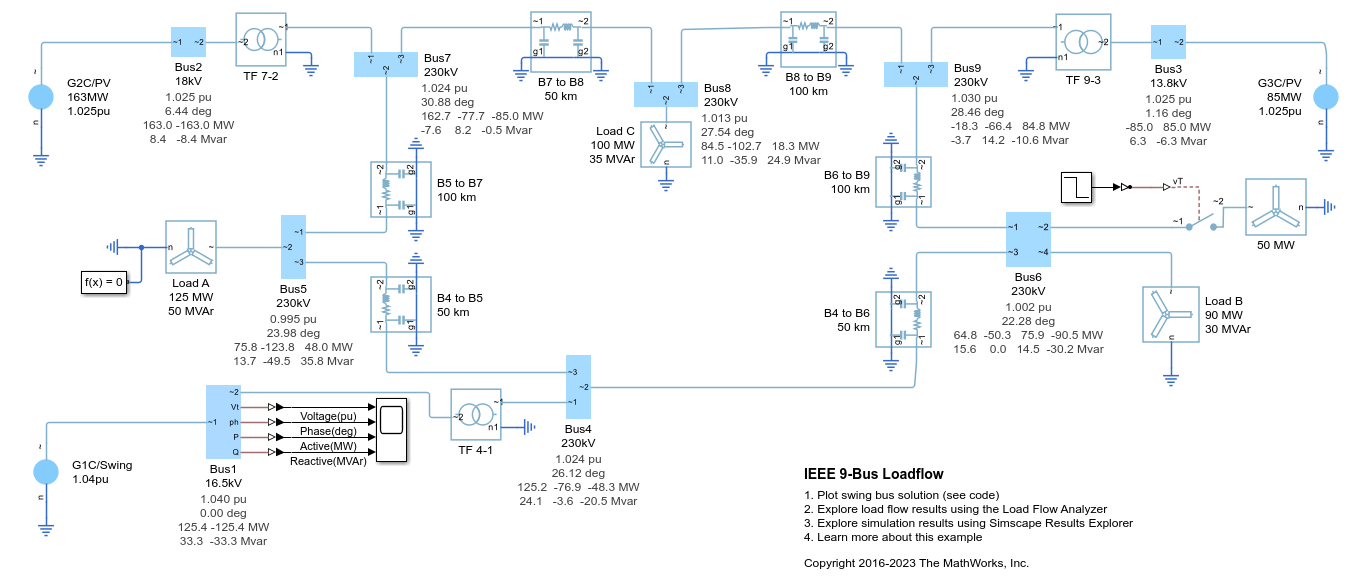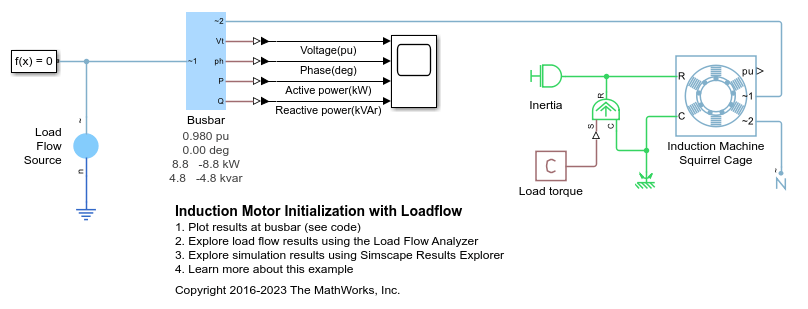Load Flow Source
Three-phase voltage source for performing load flow analysis
Libraries:
Simscape /
Electrical /
Sources
Description
The Load Flow Source block is a three-phase voltage source that you use for a load-flow analysis. This block is only for three-phase Simscape™ networks that are compatible with frequency-time simulation mode.
The block can be used with the Busbar block to implement a swing bus, PV bus, or PQ bus. The type of bus is selected from the Source type drop-down menu parameter. See Perform a Load-Flow Analysis Using Simscape Electrical for more information about load flow in Simscape Electrical™.
When you select None for the Source
impedance parameter, the Load Flow Source
block models an ideal three-phase voltage source that maintains sinusoidal voltage of
the specified magnitude across its terminals, independently of the current flowing
through the source.
The source has a wye configuration, and port n provides a connection to the center of the wye. Port ~ is a three-phase port that represents the phases a, b, and c. The current is positive if it flows from positive to the center of the wye, and the voltage across each phase is equal to the difference between the voltage at the positive terminal and the center of the wye, V(+) – Vn.
Variables
To set the priority and initial target values for the block variables before simulation, use the Initial Targets section in the block dialog box or Property Inspector. For more information, see Set Priority and Initial Target for Block Variables.
Nominal values provide a way to specify the expected magnitude of a variable in a model. Using system scaling based on nominal values increases the simulation robustness. You can specify nominal values using different sources, including the Nominal Values section in the block dialog box or Property Inspector. For more information, see System Scaling by Nominal Values.
Examples
Limitations
If you do not initialize or simulate by using frequency-time equations, the Source type parameter must be set to
Voltage source with series impedance.When initializing the block when Source type is set to swing bus, PV bus or PQ bus, including the internal impedance can result in initialization convergence issues. Resolve the convergence issues by using the Internal source phase search range parameter, omitting the impedance, or modeling the impedance external to the Load Flow Source block.
Ports
Conserving
Parameters
Extended Capabilities
Version History
Introduced in R2019b



